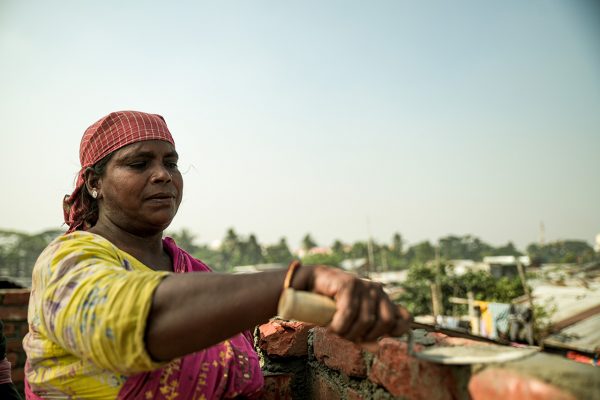The motorcycle girl
Reading Time: 2 minutes
Khadija’s story, posted in the features section of the BRAC site, shows how vocational training can break down barriers in traditional societies and ultimately lead to families lifting themselves out of poverty.
 Khadija’s story, posted in the features section of the BRAC site, shows how vocational training can break down barriers in traditional societies and ultimately lead to families lifting themselves out of poverty.
Khadija’s story, posted in the features section of the BRAC site, shows how vocational training can break down barriers in traditional societies and ultimately lead to families lifting themselves out of poverty.
Khadija, pictured here, is a daughter in a landless family from Bagmara, a subdistrict in the north of Bangladesh. She’s a school dropout who has mastered the craft – unusual for a woman – of repairing motorcycles.
She’s part of a program called STAR, for Skills Training for Advancing Resources, which works with adolescents who have dropped out of school to give them vocational training. It’s a BRAC program in which shagreds (students) learn from an ustad (teachers), who is often an entrepreneur him- or herself, with the help of assistant teachers.
The involvement of multiple interventions in creating opportunity for the poor showcases BRAC’s holistic approach to development. As this field report shows, in some cases STAR’s assistant teachers are recipients of BRAC’s Medhabikash scholarship, awarded to talented students from poor families so they can continue their secondary and university education. All these elements tie together.
Khadija herself comes from a “BRAC family”, in some respects: The mother now owns a cow thanks to BRAC, and her brother a student at one of BRAC’s primary schools. BRAC’s system of “nonformal” primary schooling has massive reach, with over 1.1 million students currently enrolled, making it the largest private, secular education provider in the world.
But as we have found, just sending kids to school is never enough – just as microfinance alone, or health care alone, or jobs alone will not solve poverty.
Going to school costs money, even if school is nominally free. Sending a child to school is an opportunity cost for families that need help at home or extra income from working children. That’s why, unfortunately, Khadija had to drop out before finishing fifth grade to work as a domestic helper.
Luckily the story doesn’t end there:
Khadija was chosen as a learner for BRAC’s STAR project. As per her father’s choice, Khadija started her training on motorcycle repairing. Initially, she was discouraged by many people from pursuing this trade, who raised doubts such as, “How can a girl work in a marketplace? Can she be able to make anything out of this trade?”
Khadija proved the doubters wrong. She now dreams of freeing her whole family from the bondage of poverty by with her motorcycle repair skills.
Peer mentorship plays a strong role in these success stories. “These students are from similar background as us,” says one of the assistant teachers at a STAR program that teaches adolescents how to repair mobile phones. “We have come out of this poverty trap and I feel it is our obligation to help them as well. We have now become friends.”





